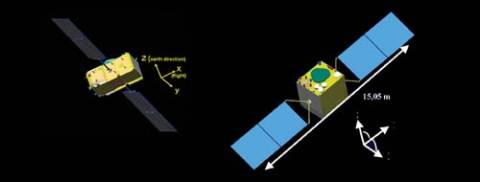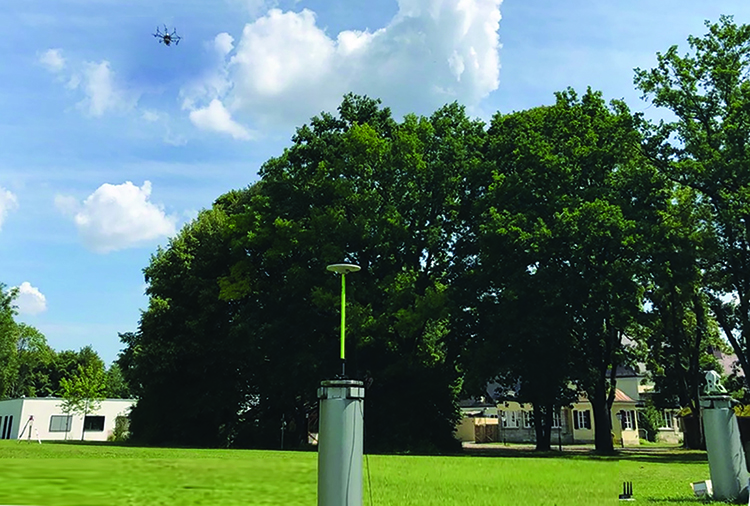A GNSS System of Systems? We began our discussion in the previous column (January/February 2007 issue) with an exploration of the current status, plans, similarities, and differences among GPS (United States), GLONASS (Russia), Galileo (European Union), and Compass (People’s Republic of China).
Consider the similarities: All four are global systems accessible by users worldwide. They have one or more radio frequency bands in common where they broadcast open signals free of charge. They have comparable atomic time and geodetic coordinate frames.
A GNSS System of Systems? We began our discussion in the previous column (January/February 2007 issue) with an exploration of the current status, plans, similarities, and differences among GPS (United States), GLONASS (Russia), Galileo (European Union), and Compass (People’s Republic of China).
Consider the similarities: All four are global systems accessible by users worldwide. They have one or more radio frequency bands in common where they broadcast open signals free of charge. They have comparable atomic time and geodetic coordinate frames.
Three of them have a common signal technology — code division multiple access (CDMA) — and the other system is considering adopting it as well. They all predominately use middle Earth orbiting (MEO) satellites with constellations (current or planned) of between 24 and 30 space vehicles each.
As we concluded in the last column, the basis for a GNSS system of systems seems strong, building on infrastructure, operations, and policies that are already in place or under development. Now we will turn to some concepts further outside the realm of the expected — some speculative possibilities based on innovative ideas, but which nevertheless are within the realm of the possible.
And nowhere is there more room for innovation than in the domain that underlies GNSS technology itself: time.
Innovations in Clocks
If there is an area where revolutionary developments could occur in the next few years, then it is in the field of clocks. The atomic clocks placed on board the satellites are probably the most crucial single element to achieve a high-performance GNSS.
Because the development cycle in clock technology is about 7 years, these newest generation technologies might be available on orbit in a timeframe of 20 years. This would considerably alleviate the challenge of generating predicted satellite clock corrections. Furthermore, one might speculate that, since orbit prediction already works quite well today, differential correction service for GNSS systems could become obsolete with the availability of improved satellite clocks. Let us now look in more detail at what future clocks might look like.
Importance for TOA-Based Systems. GPS, GLONASS, Galileo, and other GNSSes are designed to operate on the basis of the principle, “one-way time of arrival (TOA) ranging.” Each satellite emits its ranging signals together with a navigation message that tells the user’s receiver from which satellite, from which orbital position, and at what time it was broadcast.
By comparing the time of a signal’s arrival with the time of its transmission, a pseudorange can be calculated. This one-way TOA principle allows an unlimited number of users to use a GNSS.
However, this method assumes that all GPS satellite clocks involved in a position solution are fully synchronized with each other and with the International GPS time (or some equivalent reference). Moreover, it requires extremely precise information about the satellite’s position in a well-defined reference frame.
The current standard for all GNSS satellites is to have three to four clocks on board each spacecraft — one of them being the master clock and the others, redundant units. Currently those clocks are of rubidium and/or caesium types.
Galileo will eventually also use a hydrogen-maser clock, if tests on the second Galileo In-Orbit Validation Experiment (GIOVE-B) satellite employing this technology turn out to be successful. Hydrogen masers have superior short-term stability compared to other frequency standards, but lower long-term accuracy due to changes in the properties of the clocks’ microwave cavity over time.
Atomic clocks are also installed at ground stations of those GNSS systems. GPS clocks in space and on the ground are in some way synchronized to the International Atomic Time (TAI), which is the world’s continuous and stable time scale. Alternatively (or additionally), the clocks are also tied to the civil Coordinated Universal Time (UTC). Derived from TAI, but synchronized with the passing of day and night on the basis of astronomical observations. These time scales and timing systems result from the cooperation of about 60 timing laboratories around the world, which continuously contribute to the realization of UTC.
UTC rarely differs from the international average by more than 10 nanoseconds. NIST is one of four laboratories worldwide operating the highest primary frequency standards to determine the frequency of UTC.
(For the rest of this story, please download the complete article using the PDF link above)





